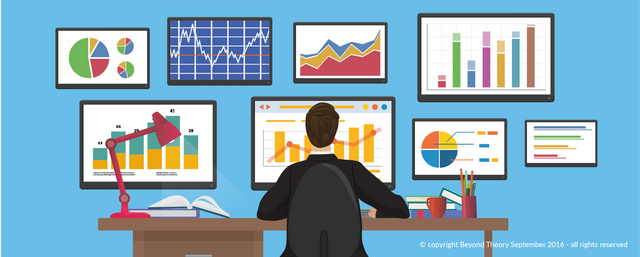Cardano is a blockchain platform for changemakers, innovators, and visionaries, with the tools and technologies required to create possibility for the many, as well as the few, and bring about positive global change.
At it’s most basic, the Cardano blockchain is a financial system which operates in two layers, with the most basic of those layers being the one upon which ADA is exchanged. This basic layer of Cardano is expressly built to enable a digital currency economy with ADA as the native monetary unit.
The open-source project also aims to “redistribute power from unaccountable structures to the margins to individuals” — helping to create a society that is more secure, transparent and fair.
Cardano was founded back in 2017, and the ADA token is designed to ensure that owners can participate in the operation of the network. Because of this, those who hold the cryptocurrency have the right to vote on any proposed changes to the software.
The team behind the layered blockchain say that there have already been some compelling use cases for its technology, which aims to allow decentralized apps and smart contracts to be developed with modularity.
Cardano is used by agricultural companies to track fresh produce from field to fork, while other products built on the platform allow educational credentials to be stored in a tamper-proof way, and retailers to clamp down on counterfeit goods.
Ada is a digital currency. Any user, located anywhere in the world, can use ada as a secure exchange of value – without requiring a third party to mediate the exchange. Every transaction is permanently, securely, and transparently recorded on the Cardano blockchain.
Every ada holder also holds a stake in the Cardano network. Ada stored in a wallet can be delegated to a stake pool to earn rewards – to participate in the successful running of the network – or pledged to a stake pool to increase the pool's likelihood of receiving rewards. In time, ada will also be usable for a variety of applications and services on the Cardano platform.

The Founders of Cardano
Cardano was founded by Charles Hoskinson, who was also one of the co-founders of the Ethereum network. He is the CEO of IOHK, the company that built Cardano’s blockchain.
In an interview for CoinMarketCap’s Crypto Titans series, Hoskinson said that he got involved in cryptocurrencies back in 2011 — and dabbled in mining and trading. He explained that his first professional involvement in the industry came in 2013, when he created a course about Bitcoin that ended up being taken by 80,000 students.
As well as being a technology entrepreneur, Hoskinson is also a mathematician. In 2020, his technology company donated ADA worth $500,000 to the University of Wyoming’s Blockchain Research and Development Lab.
What Makes Cardano Unique?
Cardano is one of the biggest blockchains to successfully use a proof-of-stake consensus mechanism, which is less energy intensive than the proof-of-work algorithm relied upon by Bitcoin. Although the much larger Ethereum is going to be upgrading to PoS, this transition is only going to take place gradually.
The project has taken pride in ensuring that all of the technology developed goes through a process of peer-reviewed research, meaning that bold ideas can be challenged before they are validated. According to the Cardano team, this academic rigor helps the blockchain to be durable and stable — increasing the chance that potential pitfalls can be anticipated in advance.
In 2020, Cardano held a Shelley upgrade that aimed to make its blockchain “50 to 100 times more decentralized” than other large blockchains. At the time, Hoskinson predicted that this would pave the way for hundreds of assets to run on its network.
Cardano brings that viewpoint to the blockchain by introducing the following fundamental guiding principles in designing their blockchain:
- You cannot predict the future, so build in wiggle room
- Complexity is nice on paper, but simplicity usually wins
- Too many cooks spoil the broth
- Once a standard is set it will probably stick around, regardless of whether it is suboptimal
- Bad ideas can actually evolve into pretty good ones if there is a will
Cardano's steady rise is steady. Looking at its current figures, we can see that Cardano has further advanced its record and increased its value to the level of $ 2.32.
The live Cardano price today is $2,32 USD with a 24-hour trading volume of $16.094.692.235 USD. Cardano is down 0,56% in the last 24 hours. The current CoinMarketCap ranking is #4, with a live market cap of $74.075.084.930 USD. It has a circulating supply of 31.948.309.441 ADA coins and a max. supply of 45.000.000.000 ADA coins.

Token Summary (coinmarketcap)
Interesting on-chain metrics that provide a rapid understanding of the state of Cardano

Actionable Signals (coinmarketcap)
Momentum and value signals that will help you better judge the on-chain sentiment of Cardano

https://coinmarketcap.com/currencies/cardano/onchain-analysis
Graphical analysis of Cardano for the last 1 week is as follows;

https://uk.investing.com/indices/investing.com-ada-usd
I hope you enjoy my analysis of data from several sites.
Cardano Markets
Binance
Binance TR
Coinbase
Bittrex
Paribu
BtcTurk
KuCoin
Huobi
Gate.io
Sources
https://cardano.org
https://coinmarketcap.com/currencies/cardano
https://stackedcrypto.medium.com/cardano-ada-fundamental-analysis-d30661ba7746
https://uk.investing.com/indices/investing.com-ada-usd
https://app.intotheblock.com/coin/ADA